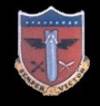|
Crew
28 as many of the other crews of the 39th was formed in
Salina, KS.
While
the exact missions are not known at this time, Emerson
Sollom, Radio Operator states they flew 29 missions –
the 29th being the “Show of Force” over the
“USS MISSOURI”.
The
crew had flown 5 to 7 missions when LeMay had stated that
the bombing missions were going to start bombing from
an altitude of 5,000 instead of the 21,000 to 23,000 feet
previously. On the next mission – Tokyo 17 square
miles of the city were burned out recalls Sollom.
“I
don’t remember each individual mission or target
that was bombed.” However he does remember “twice
having a live bomb stuck in the bomb bay hanger after
dropping a load on a target. It required our flight engineer
(Farnum) and myself to go out in the bombbay with the
bombbay doors open and dislodge the bomb by sitting down
on the catwalk and kicking the side of the bomb to loosen
it from the hanger and watching the bomb drop.”
Of
the many experiences Emerson had of WWII “the one
I think about most freguently” was:
“I
believe our crew had flown 7 missons when a new crew came
in from states. The enlisted men came into our barracks.
The radio operator of that crew bunked next to me so I
got to know him. Of course that had a lot of questions
and our answers were some what exaggerated. They practiced
bombing some of the small islands and rocks not populated
in the Guam area. After finishing their practice of a
few days they were ready for their first real bomb-run.
The
group took off from Guam including the new crew. It was
common practice to fly pretty much solo until we reached
the rendezvous point, usually a couple hundred miles off
the coast of Japan. This point was an uninhabited island
that we circled and then after all the planes got there,
we got into formation and flew the bomb run.
As
we were circling the new crew was right behind our plane,
out of the sun cam this Jap Zero, aimed his guns directly
at the plane behind us, hit them and the plane began to
fall 20-some thousand feet into the ocean and disappear.
Next
day supply came into the barracks and packed up their
personnel belongings.
Crew
28 was among those that flew the group’s first mission
on 12 April 1945. On this mission, members of this crew
were awarded the Distinguished Flying Cross.
|
General
Order 54 Section VI dated 5 September 1945 states:
“For
extraordinary achievement while participating in
aerial flight over the Japanese home island of Honshu
on 12 April 1945. These individuals formed the combat
crew of a B—29 aircraft assigned to the history—making
daylight strike against a chemical plant at Koriyarna.
This highly successful strike against an important
industrjal center involved a flight of more, than
3,800 miles over water, and hostile territory, and
was then longest bombing mission ever completed.
Upon arrival at tbe assembly point, thoy found that
the other planes in their formation had departed.
Undaunted by the prospect of taking a single plane
over a heavily-defended and already alerted target
area, they unhesitatingly pressed on the objective.
In spite of enemy fighter attacks and heavy caliber
anti- aircraft fire, they released their projectiles
from an altitude of 8,000 feet with such accuracy
that one hundred percent of them struck in the target
area.The conspicuous courage and skill displayed
by those veterans of repeated assaults against the
Japanese homeland, in spite of the unusual strain
entailed by an eighteen-hour flight over water and
enemy territoy, contributed materially to a mission
which aided in the successful prosecution of the
war, and reflect great credit on themselves and
the Army Air rorces.”
1st
Lieutenant Graham E. Elvgren, (then Second Lieutenant)
as Pilot
Flight
Officer Malcolm W. Farnum, (then Technical Sergeant)
as Flight Engineer
Staff
Sergeant Emerson W. Sollom, (then Corporal) as Radio
Operator
Techincal
Sergeant Patrick L. Shea, (then Corporal) as Gunner
Sergeant
Dave Felix, (then Corporal) as Gunner
Staff
Sergeant John L. Millette, (then Corporal) as Gunner
Staff
Sergeant Lynn J. McClure, (then Corporal) as Gunner |
Per
General Order 57 dated 08 September 1945 - Award
of The Distinguished Flying Cross - Oak Left Cluster
- the following Officers of Crew 28 earned the Bronze
Oak Leaf Cluster to their Distinguished Flying for
the 12 April 1945 stated above in GO 54 Section
VI dated 5 September 1945:
Major
Charles B. Miller, (then Captain) Air Corps, United
States Army as Airplane Commander
First
Lieutenant Jonas Rsenfeld, Air Corps, United States
Army as Navigator
First
Lieutenant Ernest T. Rogers, Air Corps, United States
Army as Bombardier
Flight
Officer Edward Kammer, Air Corps, United States
Army as Radar Observer |
|





